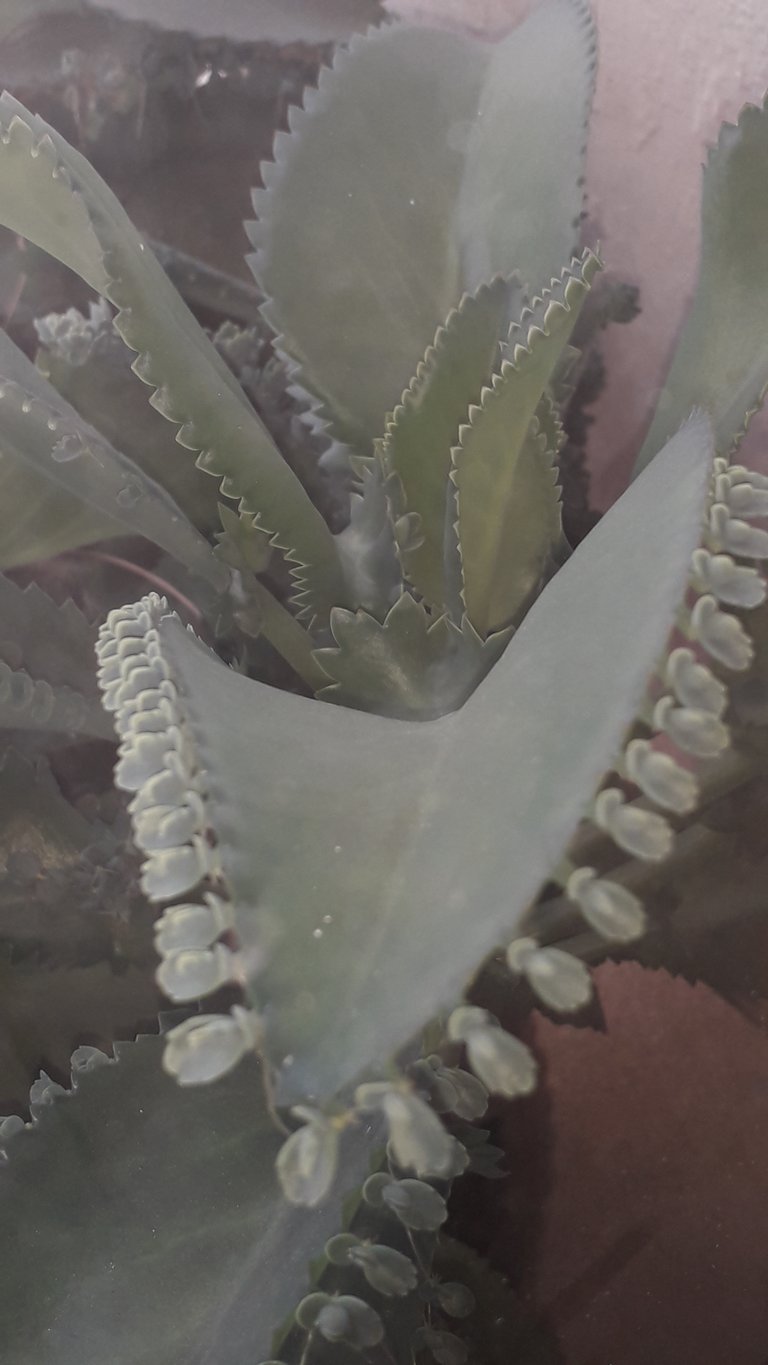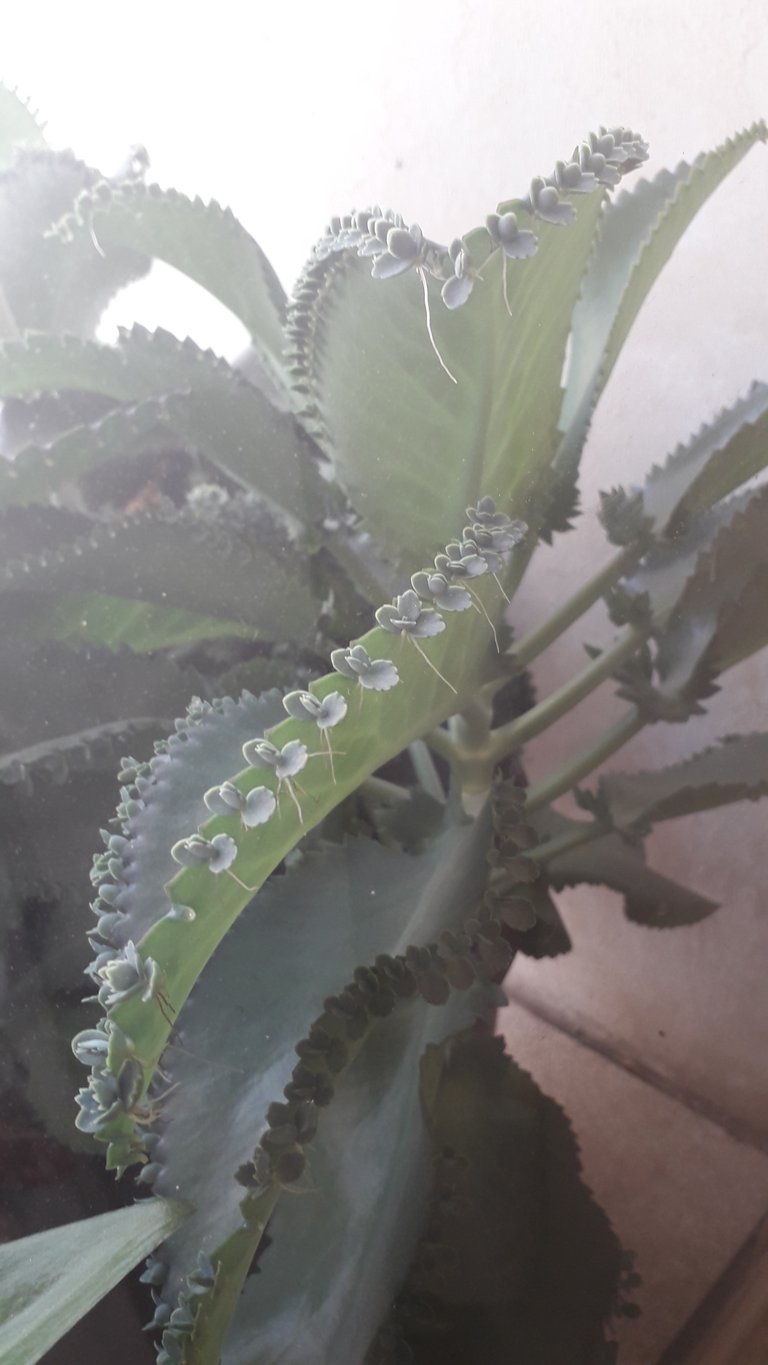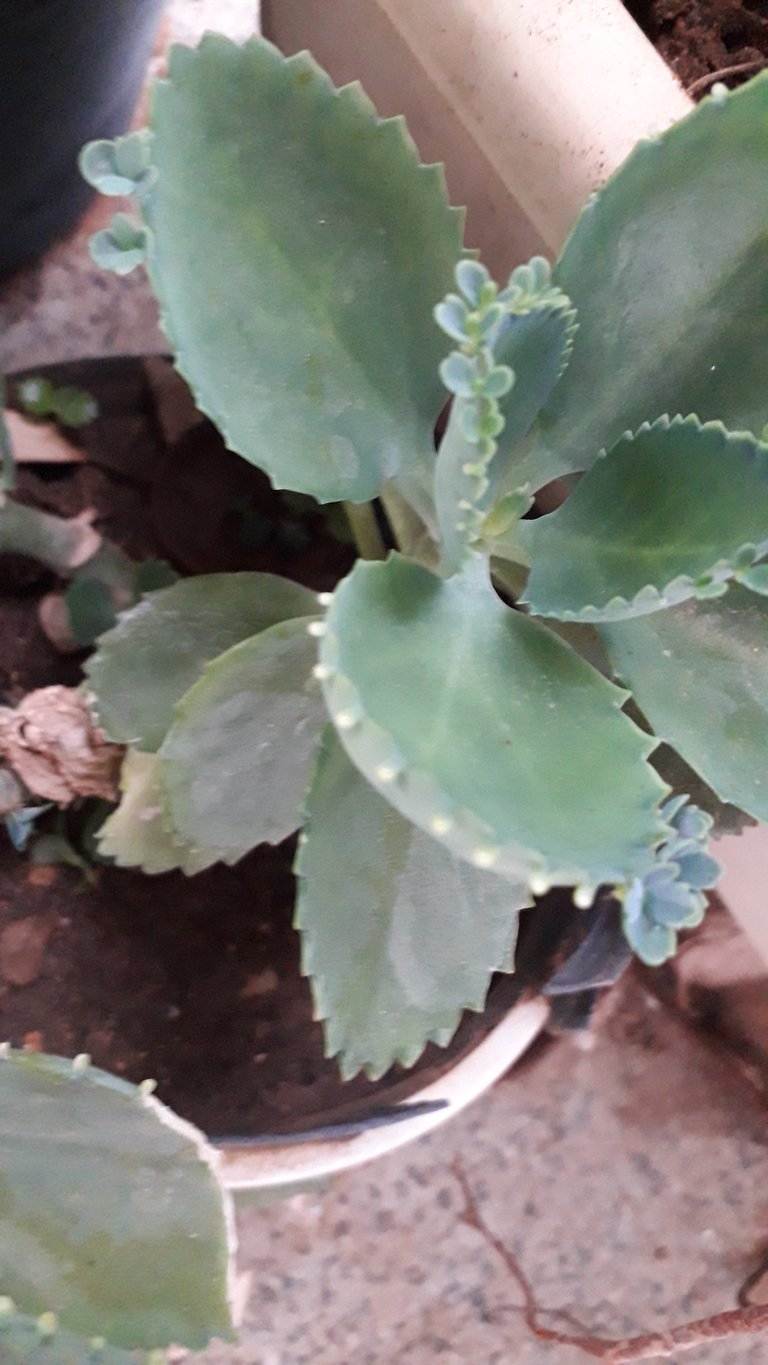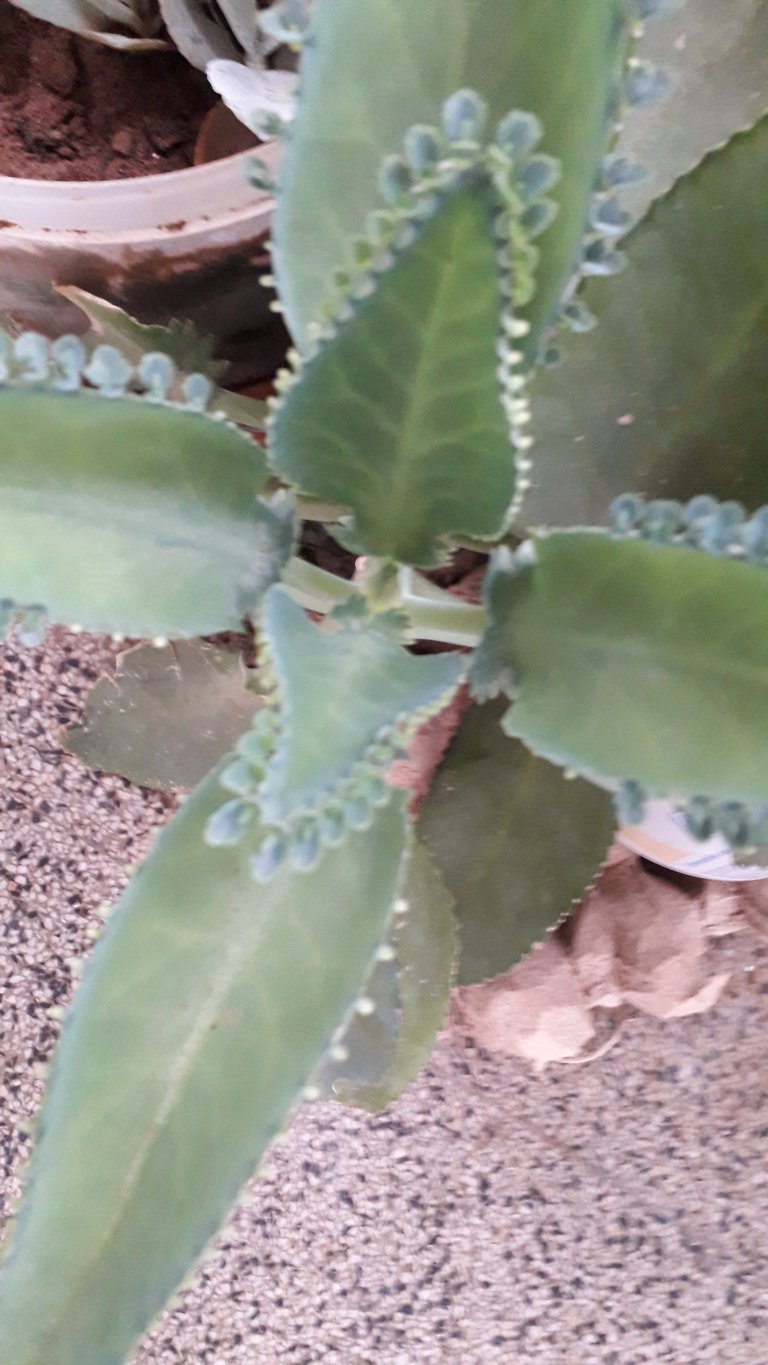Mala madre / Kalanchoe daigremontiana


Division:MagnoliophytaClass:MagnoliopsidaSubclass: Rosidae, Order: Saxifragales Family: Crassulaceae, Subfamily: Kalanchoideae, Genus:KalanchoeSpecies: K. daigremontiana Raym. Hamet & H. Perrier 1914, this crop has the property of producing new seedling shoots along the margin of its leaves, which detach and emit roots, it has been scientifically proven that this plant accumulates water in its leaves, to tolerate strong climatic conditions of extreme summers, Its leaves vary according to the care and where they are cultivated normally can measure between 15 to 20 cm, but have been recorded that exceed 30 to 35 cm, has that size because its leaves have small bulbous spurs, where the shoots of new plants arise. With respect to its flowering there are situations that bloom annually, but it also has the property of developing a terminal inflorescence.



in the field of medicine has served as a natural and pharmaceutical basis for anticancer, antihistamine, anti-inflammatory, antidiabetic, antiallergic, as well as very effective for topical cures, the most fascinating thing is this species likes to be in dry, wet, rocky, gardens with large spaces.
Now well in my photographic work this species is the one that can be used with its benefits, but there is another variety as colorful leaves, that corresponds to K. daigremontiana is toxic, it contains a cardiac glycoside called daigremontianina.
